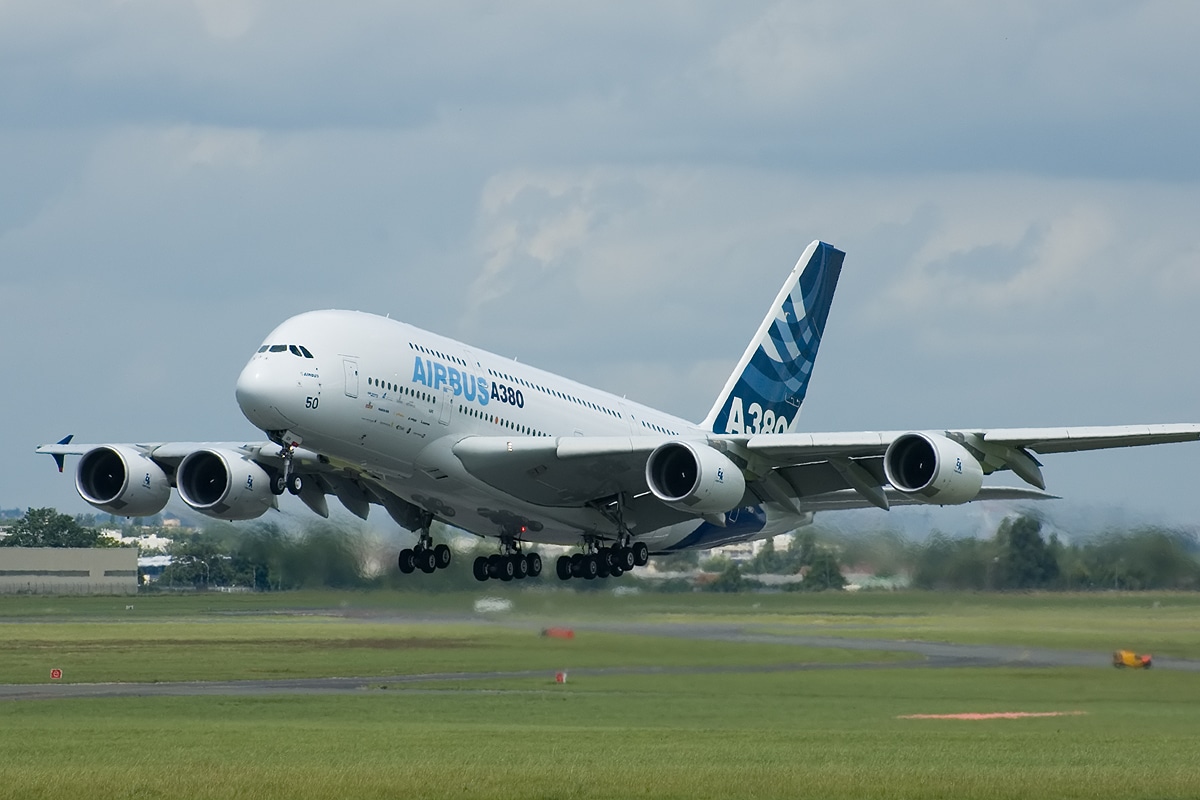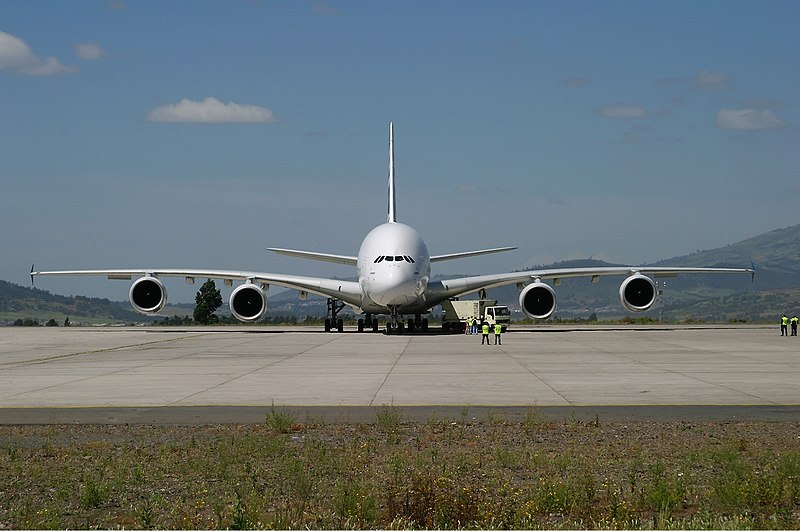Aerospace
Why A380 aircraft have become so important to many airlines today
Since passenger demand is booming but airlines are unable to meet it owing to fleet shortages, Airbus A380 planes have gained more significance for some carriers.

One of the largest aircraft in the world is the Airbus A380. It is increasingly important resources for the airlines as the demand from passengers grows globally.
Since two years ago, the entire planet has been under extreme lockdown. People have started travelling more frequently now that COVID is progressively declining, according to research. and the majority of travelers have to transit through the airport. However, even the airport is now unable to manage the number of passengers that a single plane can carry, which is between 180 and 350 seats. This makes it impossible to clear passengers at the airport.
Heathrow Airport recently passed 6 million people in just 4 months; the airport claims it can accommodate 100,000 passengers per day; as a result, numerous flights were cancelled, along with over 10,300 flights operated by British Airways. However, it is highly challenging for airlines to manage these cancelled flights because the majority of passengers become irate and may submit complaints against airlines. In order to minimize the impact on passengers, Heathrow is requesting their airline partners to cease selling summer tickets as just roughly 1,500 of the 4,000 daily seats have currently been sold to travelers on average.
Since Emirates Airlines has more Airbus A380s that can hold more than 500 passengers and is prepared to run LHR airport to carry passengers, this airline has suddenly taken on a significant role in the discussion. According to Emirates Airlines, they rehired and trained 1,000 A380 pilots in the previous year in order to be ready to meet consumer and travel demand.
Despite the handling capability of the Emirates airlines, Heathrow is still unable to accommodate such high numbers of passengers right now. Given the progress, the airline definitely needed wide-body aircraft like the 747 or the A380.
How the A380 can meet the demand at this time ?
As the airport is larger, each landing and parking space can accommodate more than 500 passengers at once, which is three times the capacity of an A320 or a Boeing 737-800. where the ATC would have difficulty controlling so many aircraft and landing because of some of the high traffic locations. The passengers are flawlessly picked up by an Airbus A380.
The Emirates A380 presently needs 105 minutes to turn around. For a full-service carrier with belly cargo, the typical turnaround time for a container – based A320 is estimated at 45 minutes. https://jetlinemarvel.net/emirates-launches-us15-million-campaign-to-promote-dubai-hub-and-inspire-travel/The Boeing 777 aircraft needs roughly 90 minutes to get ready for takeoff at Emirates’ hub in Dubai.
Airbus has a 2 Class (long-haul) capacity of up to 615 seats and a range of 8,000 to 15,000 kilometers. It weights between 510 and 575 tonnes. It is capable of handling both long- and short-haul flights.
Some airports can only accommodate Airbus A380 aircraft due to capacity limitations with their runways and taxiways, which also necessitated the use of some aero bridge services.
Airbus has ceased producing the A380 because there is less demand from airlines, even though there have never been any significant issues. After the Boeing 747 jumbo jet, this was the most anticipated aircraft ever produced for the aviation industry.
This airplane is more fuel-efficient, using 13,78 kg of fuel per kilo meter to transport 550 passengers over a distance of 13,300 km. With 304 passengers on board, the Boeing 777-200 ER burns 7,51 kg of fuel for every kilometer for a distance of 10,251 kilometers. In contrast, an Airbus A320 travelling 1,220 km and carrying 154 passengers uses 2.79 Kg of fuel per km.
Therefore, even though it can carry loads three times as large as those of small planes and can meet high demand, the Airbus A380 is still profitable for airlines to operate.
In addition to Emirates operating this aircraft, other airlines including Lufthansa, Qantas, Singapore Airlines, and British Airways have already retrieved A380 aircraft from the storage yard in order to meet growing demand throughout the globe.
There is still a glimmer of hope for this enormous aircraft. This aircraft still works miracles instead of being sent to the scrap heap.
Please leave a comment with your thoughts.

Aerospace
Which is bigger 777x or 787 aircraft ?

The 777X is a new series of the Boeing 777 family and is designed to be larger and more efficient than its predecessor. It features two variants: the 777-8 and the 777-9, being the larger of the two.
The Boeing 777X emerges as the larger sibling within the Boeing family, representing a significant leap forward in both size and efficiency. Comprising two variants, the 777-8 and the 777-9, the latter takes the crown as the larger of the two. With its expansive fuselage and impressive wingspan, the 777X is tailored for long-range journeys and boasts a substantial passenger capacity.
On the other hand, the Boeing 787, affectionately known as the Dreamliner, occupies a niche in the market as a smaller yet formidable aircraft designed for medium to long-range flights. Its distinguishing feature lies in its composite fuselage, a technological marvel that renders it lighter and more fuel-efficient compared to conventional aluminum counterparts. The Boeing 777X is larger than the Boeing 787 aircraft.
When it comes to passenger capacity, the 777-9 reigns supreme, typically accommodating a sizeable contingent of 400-425 passengers in its standard configuration. In contrast, the 787, with its more modest dimensions, typically carries between 240-290 passengers, depending on the variant and layout.
One of the remarkable innovations introduced with the 777X is its folding wingtips, a feature designed to address the logistical challenges of accommodating such a large aircraft in conventional airport gates. These folding wingtips enable the 777X to retract its wings, allowing it to fit into gates designed for smaller aircraft while still reaping the benefits of an extended wingspan during flight, thereby enhancing fuel efficiency and operational flexibility
Aerospace
China Secures Production Certificate for Mass Production of Pilotless eVTOL Aircraft

The first passenger-carrying pilotless electric vertical takeoff and landing (eVTOL) aircraft in the world, the EH216-S, has received the Production Certificate for its eVTOL aircraft from the Civil Aviation Administration of China (CAAC).
This is a significant milestone for EHang Holdings Limited, the leading UAM technology platform company in the world. This outstanding accomplishment is another big step towards mass manufacturing for the eVTOL aircraft and the ensuing commercial operations, building on the ground-breaking acquisition of the Type Certificate and the Standard Airworthiness Certificate for the EH216-S.
The PC is a crucial certificate that the aircraft maker receives from the CAAC, the country’s aviation authority. By obtaining this certificate, EHang has demonstrated that it has set up a quality management system for mass production that satisfies the airworthiness regulation standards set forth by the CAAC, and the company has been given permission to continue producing mass quantities.
It is also a strong guarantee of the calibre of the goods made by EHang. Raw materials, supplier management, manufacturing organisation, production quality control, aircraft pre-delivery test, after-sales repair and maintenance, etc. are all included in the mass production quality management system for the EH216-S.
To ensure that every aircraft and its components that roll off the production line strictly adhere to the approved type design and safety requirements, the system sets clear guidelines and documentation for every step in the production procedure. This ensures comprehensive traceability and safety control.
Aerospace
Four Airbus A380 Superjumbos lined up to be scrapped

In a strategic move aimed at reclaiming valuable resources from the iconic Airbus A380 aircraft, VAS Aero Services and Dr. Peters Group have announced a significant collaboration.
This partnership marks a milestone in aviation logistics and aftermarket services, with four of these colossal planes slated for teardown and redistribution of used serviceable material (USM).
The venture between VAS Aero Services, renowned for its expertise in aircraft dismantlement, and Dr. Peters Group, a prominent Germany-based investment fund management firm, underscores a commitment to sustainable aviation practices. This isn’t their first foray into scrapping A380s; their successful partnership has already seen the dismantlement of these aircraft, making them pioneers in this niche.
Under the agreement, the latest consignment brings the tally to eight A380s entrusted to VAS by Dr. Peters Group. Managing Director Christian Mailly of Dr. Peters Group emphasized the trust placed in VAS, citing their unparalleled capabilities in dismantlement and aftermarket sales network. It’s a strategic move in response to the growing demand for quality USM parts, particularly with the resurgence in reliance on the A380.
Notably, the teardown process will be carried out at various locations, optimizing the positioning of harvested parts to cater to different markets. While some parts will be positioned in Europe to support operators in the region and the Middle East, others will remain in the Asia-Pacific region. This meticulous strategy ensures efficient access to spare parts, benefiting MROs and airlines across these markets.
The decision to retire these A380s comes at a time when operators are reassessing fleet strategies amidst evolving market dynamics. Despite initial plans for quick retirement due to the emergence of more fuel-efficient alternatives, factors such as a rebound in long-haul demand and delays in new widebody deliveries have prompted operators to reconsider. The A380, with its unique capacity and capabilities, presents a practical solution for short-term capacity management.




























